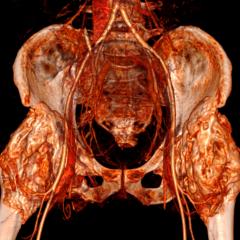
Jennifer Koplin, The University of Queensland; Dianne Campbell, University of Sydney, and Eric Lee, University of Sydney
Parents, carers and childcare settings are much more aware of food allergies than they once were. Precautions are taken and emergency plans can be developed for each child at risk of a reaction. But fewer people have heard of food protein-induced enterocolitis syndrome (FPIES).
FPIES is a poorly understood food allergy that mostly affects infants. It can be caused by a variety of foods including some not usually associated with food allergies like rice, oats and vegetables. Other causes are more typical of food allergies, like cow’s milk and egg. The most common symptom is profuse, repetitive vomiting one to four hours after eating the food.
Reactions can be dramatic and worrying for parents, with infants becoming pale, lethargic (sleepy) and floppy. In severe cases, infants develop dehydration and low blood pressure. The diagnosis is often not made the first time a reaction occurs, because of the wide range of diseases which can cause these symptoms and the time delay between when a trigger food is ingested and the onset of symptoms.
Until recently, FPIES was thought to be rare, but new evidence suggests it is more common than previously thought. The past decade has also seen significant research efforts trying to identify what part of the immune system is responsible for causing FPIES reactions, to identify better tests for diagnosis and management.
What is it that causes symptoms?
We don’t currently know much about the immune dysregulation that causes FPIES.
FPIES is classified as a non-IgE mediated food allergy, differing from other types of more common food allergy like peanut allergy, where reactions are caused by allergy antibodies that can be detected in the blood.
That also means medications used for treatment of these types of allergies (such as EpiPens and antihistamine) do not work in FPIES. Recent studies suggest another part of the immune system, called the innate system might be involved. This system is the body’s first line of defence against potential invaders. It includes bacteria that fights off bugs or injuries, rather than cells that adapt to respond to threats.
Missed cases?
Symptoms of FPIES can be mistaken for other conditions such as gastroenteritis (“gastro”), twisted bowel or serious blood infections. This can delay diagnosis.
Unlike most other types of food allergies, which have reactions caused by allergy antibodies, there is no blood test to diagnose FPIES. Diagnosis relies on careful clinical history and may require a specialised oral food challenge. This can involve removing foods suspected of causing a reaction from the diet and then reintroducing them one-by-one in planned stages under medical supervision.
How common is FPIES and is it becoming more common?
Because it is under-recognised and difficult to diagnose, estimates of FPIES prevalence vary considerably – between 0.015% to 0.7% of infants.
Although data is sparse, some studies report an increase in rates of FPIES. A study of Australian and New Zealand hospital data reported hospital admissions had tripled for infants with symptoms consistent with potential FPIES between 1998 and 2014.
An increasing awareness of FPIES, as well as improvements in diagnosis, mean FPIES diagnoses may increase without a true increase in the condition. Different estimates of FPIES rates between countries (for example 0.15% in Australia and 0.7% in Spain) may be due to true differences or variations in diagnosis and reporting. More research is needed to understand these differences.

What foods trigger FPIES?
Different foods appear to commonly cause FPIES in different countries. In Australia, rice is the most reported FPIES trigger, with cow’s milk, soy and eggs also common. Cow’s milk is the most common reported trigger in the United States and Europe. Fish is a common trigger reported in Mediterranean countries, and increasingly reported as a cause of FPIES in older children and adults. It is unclear what causes these differences, which may only be partially explained by differences in infant feeding and weaning practices between countries.
Reactions often occur for the first time in infancy with the introduction of a new food, either on the first exposure or after the first few exposures. Most affected babies only react to a single food, although some foods cross-react. This means infants have a similar response to related foods such as with grains (rice and oats); cow’s milk and soy; fish and shellfish. Those with FPIES need to avoid the foods that trigger FPIES reactions, but there is often no need to avoid other non-related foods.
Most children will outgrow FPIES in their first few years of life. There appear to be differences in how quickly FPIES resolves depending on the trigger food, with cow’s milk and grains FPIES resolving more quickly than egg and seafood FPIES. Adults can also develop FPIES, however this is less common.
What to do if you suspect you or your child has FPIES
If you think that you or your child may have FPIES, talk to your doctor. They may recommend a referral to an allergist for assessment.
The next step may be developing an action plan for a FPIES reaction. For severe reactions, such as when an infant becomes dehydrated or floppy after vomiting or diarrhoea, seek specialist care at your closest hospital emergency department. ![]()
Jennifer Koplin, Group Leader, Childhood Allergy & Epidemiology, The University of Queensland; Dianne Campbell, Professor, Child and Adolescent Health, Faculty of Medicine and Health,, University of Sydney, and Eric Lee, Department of Allergy & Immunology at the Children's Hospital at Westmead, University of Sydney
This article is republished from The Conversation under a Creative Commons license. Read the original article.



